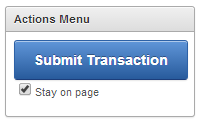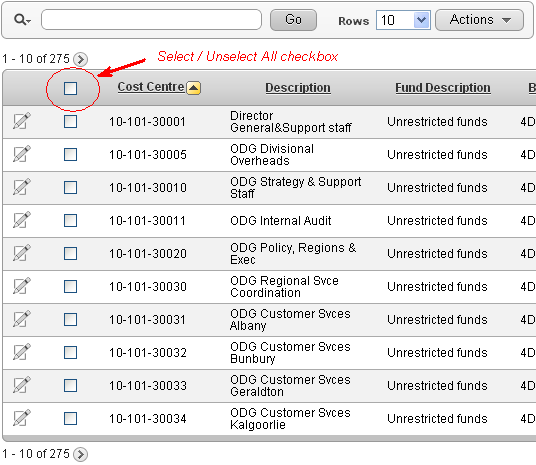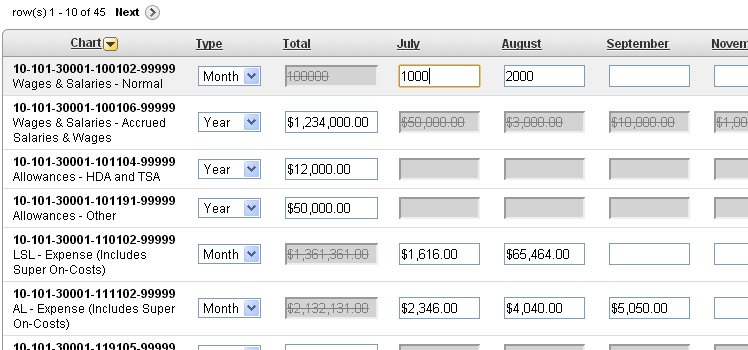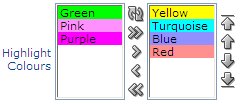You want a checkbox item on a page which is a preference, you want it to be remembered for the user across login sessions, but you don’t want the overhead of storing it in a database table. You might choose to store the value in a cookie instead. It may be lost (e.g. when the user clears their cookies or changes to a different browser or another computer), but we don’t mind – it’s just a preference.

1. Create checkbox item, e.g. P1_STAY_ON_PAGE
Display As = Checkbox
Template = No Label
List of values definition = STATIC2:Stay on page;Y
2. Add dynamic action to the checkbox item to save it when it’s changed
Event = Change
Selection Type = Item(s)
Item(s) = P1_STAY_ON_PAGE
Condition = (none)
True Action = Execute JavaScript Code
Fire On Page Load = (No)
Code = SetCookie("APEX_P1_STAY_ON_PAGE",$v("P1_STAY_ON_PAGE"));
3. Add dynamic action on page load to load it
Event = Page Load
True Action = Execute JavaScript Code
Code = $s("P1_STAY_ON_PAGE",GetCookie("APEX_P1_STAY_ON_PAGE"));
Note that the cookie name (“APEX_P1_STAY_ON_PAGE” in this example) is up to you to choose. Probably best to try making it specific to your application so it doesn’t clash with anything else.

Get it? “an item with many hats”… yeah ok.
Need to change the label of an item on-the-fly? When I run my Apex page it renders item labels like this:
<label for="P1_CONTACT_NUMBER">
<span>Contact Number</span>
</label>
If the label needs to change based on another item, I could set the label with the value of another item, e.g. “&P1_CONTACT_NUMBER_LABEL.” and when the page is refreshed it would pick up the new label. But at runtime, if the label needs to change dynamically in response to changes in other items, we need to do something else.
Caveat: The need for changing the label should be very rare – it’s bad practice to overload one field with multiple meanings. But if you must, this is what you can do.
It’s easy with a Dynamic Action running some Javascript. This changes the label text for the P1_CONTACT_NUMBER item depending on the value chosen for P1_CONTACT_METHOD, which might be a radio group or select list. The method uses jquery to search for a “label” tag with the attribute “for” that associates it with the desired item; we then navigate down to the “span” element, and call the “text” function to change the label text:
if ($v("P1_CONTACT_METHOD")=='SMS') {
$("label[for=P1_CONTACT_NUMBER]>span").text("Contact Mobile")
} else if ($v("P1_CONTACT_METHOD")=='EMAIL') {
$("label[for=P1_CONTACT_NUMBER]>span").text("Contact Email")
} else {
$("label[for=P1_CONTACT_NUMBER]>span").text("Contact Number")
}
The Dynamic Action is set up as follows:
Event = Change
Selection Type = Item(s)
Item(s) = P1_CONTACT_METHOD
Condition = (no condition)
True Action = Execute JavaScript Code
Fire On Page Load = Yes
Selection Type = (blank)
Code = (the javascript shown above)
An enhancement request I was assigned was worded thus:
“User will optionally enter the Phone number (IF the phone was blank the system will default the store’s area code).”
I interpret this to mean that the Customer Phone number (land line) field should remain optional, but if entered, it should check if the local area code had been entered, and if not, default it according to the local store’s area code. We can assume that the area code has already been entered if the phone number starts with a zero (0).
This is for a retail chain with stores throughout Australia and New Zealand, and the Apex session knows the operator’s store ID. I can look up the country code and phone number for their store with a simple query, which will return values such as (these are just made up examples):
Country AU, Phone: +61 8 9123 4567 – area code should be 08
Country AU, Phone: 08 91234567 – area code should be 08
Country AU, Phone: +61 2 12345678 – area code should be 02
Country AU, Phone: 0408 123 456 – no landline area code
Country NZ, Phone: +64 3 123456 – area code should be 03
Country NZ, Phone: 0423 456 121 – area code should be 04
They only want to default the area code for landlines, so if the store’s phone number happens to be a mobile phone number it should not do any defaulting.
Step 1: create a database function (in a database package, natch) to return the landline area code for any given store ID.
FUNCTION get_store_landline_area_code (p_store_id IN VARCHAR2) RETURN VARCHAR2 IS
v_area_code VARCHAR2(2);
v_country_code stores_vw.country_code%TYPE;
v_telephone_number stores_vw.telephone_number%TYPE;
BEGIN
IF p_store_code IS NOT NULL THEN
BEGIN
SELECT country_code
,telephone_number
INTO v_country_code
,v_telephone_number
FROM stores_vw
WHERE store_id = p_store_id;
v_area_code
:= CASE
-- Australian International land line
WHEN p_country_code = 'AU'
AND REGEXP_LIKE(p_telephone_number, '^\+61( ?)[2378]')
--e.g. +61 8 9752 6100
THEN '0' || SUBSTR(REPLACE(p_telephone_number,' '), 4, 1)
-- Australian Local land line
WHEN p_country_code = 'AU'
AND REGEXP_LIKE(p_telephone_number, '^0[2378]')
THEN SUBSTR(p_telephone_number, 1, 2)
-- New Zealand International land line
WHEN p_country_code = 'NZ'
AND REGEXP_LIKE(p_telephone_number, '^\+64( ?)[34679]')
-- e.g. +64 3 1234 567
THEN '0' || SUBSTR(REPLACE(p_telephone_number,' '), 4, 1)
-- New Zealand Local land line
WHEN p_country_code = 'NZ'
AND REGEXP_LIKE(p_telephone_number, '^0[34679]')
THEN SUBSTR(p_telephone_number, 1, 2)
ELSE
NULL
END;
EXCEPTION
WHEN NO_DATA_FOUND OR TOO_MANY_ROWS THEN
NULL;
END;
END IF;
RETURN v_area_code;
END get_store_landline_area_code;
Phone number references:
http://en.wikipedia.org/wiki/Telephone_numbers_in_Australia
http://en.wikipedia.org/wiki/Telephone_numbers_in_New_Zealand
Step 2: add a Dynamic Action to prepend the area code to the phone number, if it wasn’t entered already:
Event: Change
Selection Type: Item(s)
Item(s): P1_CUSTOMER_PHONE_NUMBER
Condition: Javascript expression
Value: $v("P1_CUSTOMER_PHONE_NUMBER").length > 0 && $v("P1_CUSTOMER_PHONE_NUMBER").charAt(0) != "0"
True Action: Set Value
Set Type: PL/SQL Expression
PL/SQL Expression: my_util_pkg.get_store_landline_area_code(:F_USER_STORE_ID) || :P1_CUSTOMER_PHONE_NUMBER
Now, when the user types in a local land line but forget the prefix, the system will automatically add it in as soon as they tab out of the field. If the phone number field is unchanged, or is left blank, this will do nothing.
It assumes that the customer’s phone number uses the same prefix as the store, which in most cases will be true. Ultimately the user will still need to check that the phone number is correct for the customer.
I recently was working on an application in APEX 4.2.1.00.08, where the application had several pages with Interactive Reports.
On all these pages, the IR worked fine – except for one crucial page, where the IR’s action menu didn’t work (Select Columns, for example, showed a little circle instead of the expected shuttle region; all the column headings menus would freeze the page; and other issues).
In Console I could see the following errors get raised (depending on which IR widget I tried):
Uncaught SyntaxError: Unexpected token ) desktop_all.min.js?v=4.2.1.00.08:14
$u_evaldesktop_all.min.js?v=4.2.1.00.08:14
_Return widget.interactiveReport.min.js?v=4.2.1.00.08:1
b.onreadystatechange desktop_all.min.js?v=4.2.1.00.08:15
Uncaught TypeError: Object #<error> has no method 'cloneNode' desktop_all.min.js?v=4.2.1.00.08:14
dhtml_ShuttleObject desktop_all.min.js?v=4.2.1.00.08:14
_Return widget.interactiveReport.min.js?v=4.2.1.00.08:1
b.onreadystatechange desktop_all.min.js?v=4.2.1.00.08:15
Uncaught TypeError: Cannot read property 'undefined' of undefined widget.interactiveReport.min.js?v=4.2.1.00.08:1
dialog.column_check widget.interactiveReport.min.js?v=4.2.1.00.08:1
_Return widget.interactiveReport.min.js?v=4.2.1.00.08:1
b.onreadystatechange desktop_all.min.js?v=4.2.1.00.08:15
After a lot of head scratching and some investigative work from the resident javascript guru (“it looks like ajax is not getting the expected results from the server”), I found the following:
http://forums.oracle.com/message/10496937
The one thing in common was that my IR also had a Display Condition on it. In my case, the condition was based on an application item, not REQUEST. I removed the condition, and the problem went away.
I’ve tried to make a reproducible test case with a fresh application, but unfortunately with no success – which means I haven’t yet isolated the actual cause of the issue. A PL/SQL condition like “1=1” doesn’t reproduce the problem. If I have a PL/SQL Expression like “:P1_SHOW = ‘Y'”, or a Value of Item / Column in Expression 1 = Expression 2 with a similar effect, the problem is reproduced – but only in this application.
As a workaround I’ve used a Dynamic Action to hide the IR on page load if required.
I want a checkbox in an Interactive Report (IR), and I want the users to be able to quickly Select All or Unselect All of them (but only for rows that were rendered on the page). I don’t want two big clunky buttons to do this, I just want a single checkbox in the header like I see on cool peoples’ web sites.

To do this:
1. In the Region Definition for the IR, add the checkbox to the query, e.g.:
SELECT ...,
apex_item.checkbox(1, record_id) selected
FROM ...
Also, set the region Static ID to some value, e.g. myreport This will be referred to by the dynamic action.
2. In the Report Attributes for the IR, modify the attributes of column “SELECTED”:
Heading =
<input type="checkbox" id="selectunselectall">
Escape Special Characters = No
Enable Users To = (uncheck all options, including Hide, Sort, etc.)
3. In the page definition, add a Dynamic Action:
Event = Change
Selection Type = jQuery Selector
jQuery Selector = #selectunselectall
Event Scope = Dynamic
Static Container (jQuery Selector) = #myreport
True Action = Execute JavaScript Code
Fire On Page Load = (uncheck)
Code =
if ($('#myreport #selectunselectall' ).is(':checked') ) {
$('#myreport input[type=checkbox][name=f01]').prop('checked',true);
} else {
$('#myreport input[type=checkbox][name=f01]').prop('checked',false);
}
The only issue with this is if the user clicks “Action” and “Select Columns”, the checkbox item shows the html code (”
UPDATE 18/5/2017: updated for multiple IRs on same page (APEX 5+)
UPDATE 23/5/2017: updated to recommended prop instead of attr
I want to visually enable/disable certain items in each row of a tabular form depending on the value of another item in that row. I’m using APEX 4.1.
My tabular form has a number of editable fields representing budgets. Each line might be an Annual budget (AMOUNT_TYPE = ‘YEAR’) with a single amount for the year, or a Monthly budget (AMOUNT_TYPE = ‘MONTH’) with separate amounts for each of the twelve months.

The first editable item (internal id f02) is AMOUNT_TYPE which is a Select List with an LOV. The second editable item (internal id f03) is the Annual Amount and should only be enabled if AMOUNT_TYPE = ‘YEAR’. The 3rd, 4th … 14th items (internal ids f04..f15) are the Monthly Amounts and should only be enabled if AMOUNT_TYPE = ‘MONTH’.
To do this:
1. Define a visual style to be applied to items that are disabled.
Add this to the Page’s “HTML Header” attribute:
<style>
.textinputdisabled {
color:grey;
background-color:lightgrey;
text-decoration:line-through;
}
</style>
In this instance, I’ve set the background color to a light grey, the text color to darker grey, and I’ve added a strikethrough effect.
2. Set the class on the AMOUNT_TYPE item
Edit the Column Attributes on the AMOUNT_TYPE column, set Element Attributes to:
class="typeselect"
3. Define the Dynamic Action
Event = Change
Selection Type = jQuery Selector
jQuery Selector = .typeselect
Condition = – No Condition –
True Action = Execute JavaScript Code
Fire On Page Load = yes
Code =
row_id = $(this.triggeringElement ).attr('id').substr(4);
if( $(this.triggeringElement ).val() == 'MONTH')
{
$( "#f03_" + row_id ).prop( 'readOnly', 'readonly');
$( "#f03_" + row_id ).prop( 'class', 'textinputdisabled');
for (var i=4;i<16;i++)
{
column_id = ("0" + i).slice(-2);
$( "#f" + column_id + "_" + row_id ).prop( 'readOnly', false);
$( "#f" + column_id + "_" + row_id ).prop( 'class', false);
}
}
else
{
$( "#f03_" + row_id ).prop( 'readOnly', false);
$( "#f03_" + row_id ).prop( 'class', false);
for (var i=4;i<16;i++)
{
column_id = ("0" + i).slice(-2);
$( "#f" + column_id + "_" + row_id ).prop( 'readOnly', 'readonly');
$( "#f" + column_id + "_" + row_id ).prop( 'class', 'textinputdisabled');
}
}
The above code first determines the id for the row; $(this.triggeringElement).attr(‘id’) returns ‘f02_nnnn’ where nnnn is the row number left-padded with zeroes. For Oracle peeps, substr(4) is equivalent to SUBSTR(x,5).
If the value of the triggering item is MONTH, we want to disable the Annual amount item and re-enable (in case they were previously disabled) the Month amount items. And vice-versa.
To disable an item, we set the readOnly property (note the capital O: this is case sensitive!) to the value “readonly” (all lowercase); this makes it so that the user cannot modify the value in the field. Note that we don’t set the “disabled” property because that would stop the item being posted to the database, which will break the tabular form processing.
Side Note: at first, I was using the .attr and .removeAttr jquery functions to set/unset readOnly as per some notes I’d found on the web; this worked for Chrome, but it made all the items permanently read-only in IE7; after some googling I found this is a feature, not a bug; and that .prop is the correct function to use in this instance.
We also set the class to the CSS style we defined earlier.
Because I have 12 items in a row to modify, I use a Javascript loop. The expression to generate the column id (“0” + i).slice(-2) does the same job as the Oracle expression TO_CHAR(i, ‘fm00’).
Next, I want to enhance this page further, so that when the user is entering monthly amounts, the Total field automatically calculates the sum of all the months (while still saving the original annual amount, if any, on the database). I had to get outside help [stackoverflow] to get this working.
UPDATE (31/7/2015): to make this work if the tabular form has an “Add Row” button, you need to use a jquery “on” event handler instead of using the Dynamic Action, and refer to the item using just “this” instead of “this.triggeringElement”, e.g. put this into the forms Execute when Page Loads:
$(document).on("change", ".typeselect", function(){
row_id = $(this).attr('id').substr(4);
... etc. ...
});

I wanted to allow users to select one or more colours from a list, and to control the order of the colours, so I’ve used a Shuttle item.
I wanted to have different background colours for each value in the list, so I started here for help. I’m not very strong with javascript (yet) but with a bit of looking around and playing I ended up with what I wanted.
I created an item on the page with the following attributes:
Display As: Shuttle
List of values definition: STATIC2:Yellow;#FFFF00, Green;#00FF00, Turquoise;#00FFFF, Pink;#FF90FF, Blue;#9090FF, Purple;#FF00FF, Red;#FF9090
Post Element Text:
<script type="text/javascript">
(function() {
for (i=0;i<$x("#CURRENT_ITEM_NAME#_2").length;i++) {
$x("#CURRENT_ITEM_NAME#_2")[i].style.backgroundColor
= $x("#CURRENT_ITEM_NAME#_2")[i].value;
}
for (i=0;i<$x("#CURRENT_ITEM_NAME#").length;i++) {
$x("#CURRENT_ITEM_NAME#")[i].style.backgroundColor
= $x("#CURRENT_ITEM_NAME#")[i].value;
}
})();
</script>
Notes:
- the value of each item in the list is a HTML colour code. This colour code is used to set the background colour of the item in the list.
- the shuttle item actually involves two select lists in the generated page. If the item name is P1_SHUTTLE, the generated items will be P1_SHUTTLE_2 (the left-hand list) and P1_SHUTTLE (the right-hand list). These are referenced in the javascript via #CURRENT_ITEM_NAME# and #CURRENT_ITEM_NAME#_2.
- the $x returns the select list dom object, which supports the “length” attribute – this returns the count of items in the list
- the select list index starts at 0 and goes up to length-1
A small problem is when the “reset” button is clicked the colours disappear. They reappear if the page is refreshed, however.





